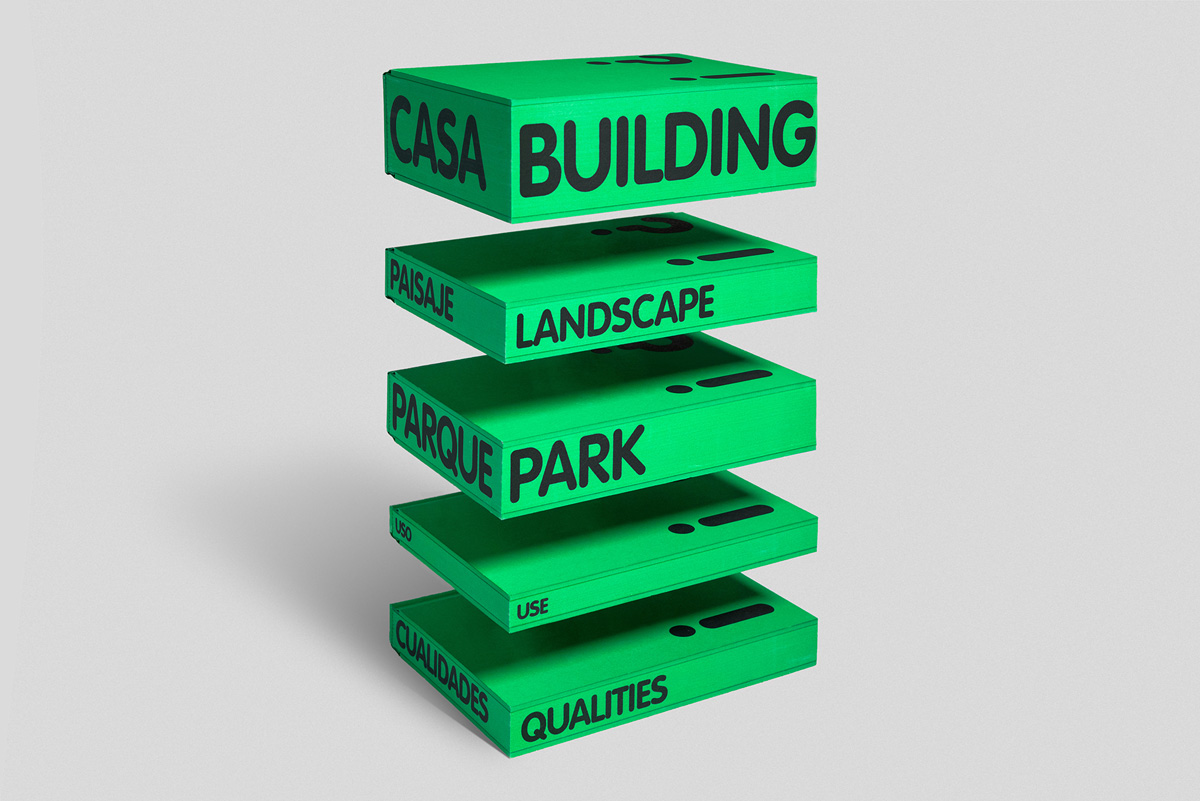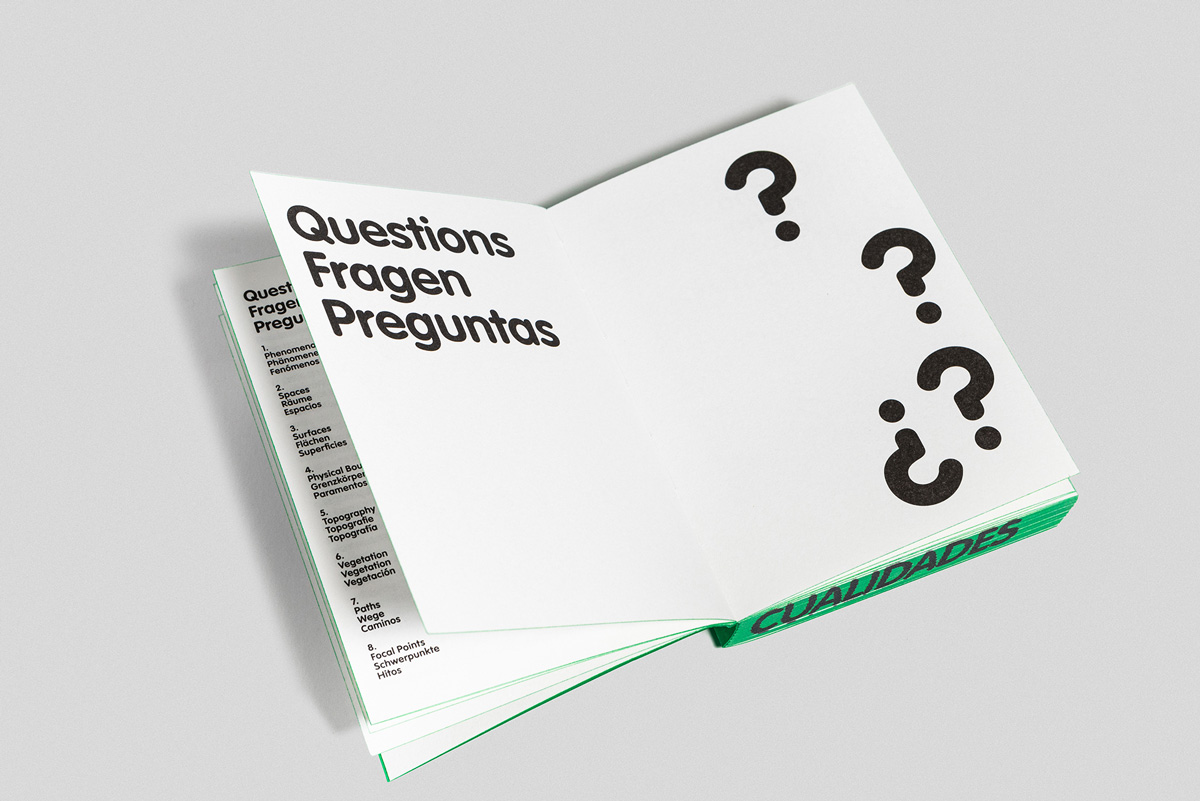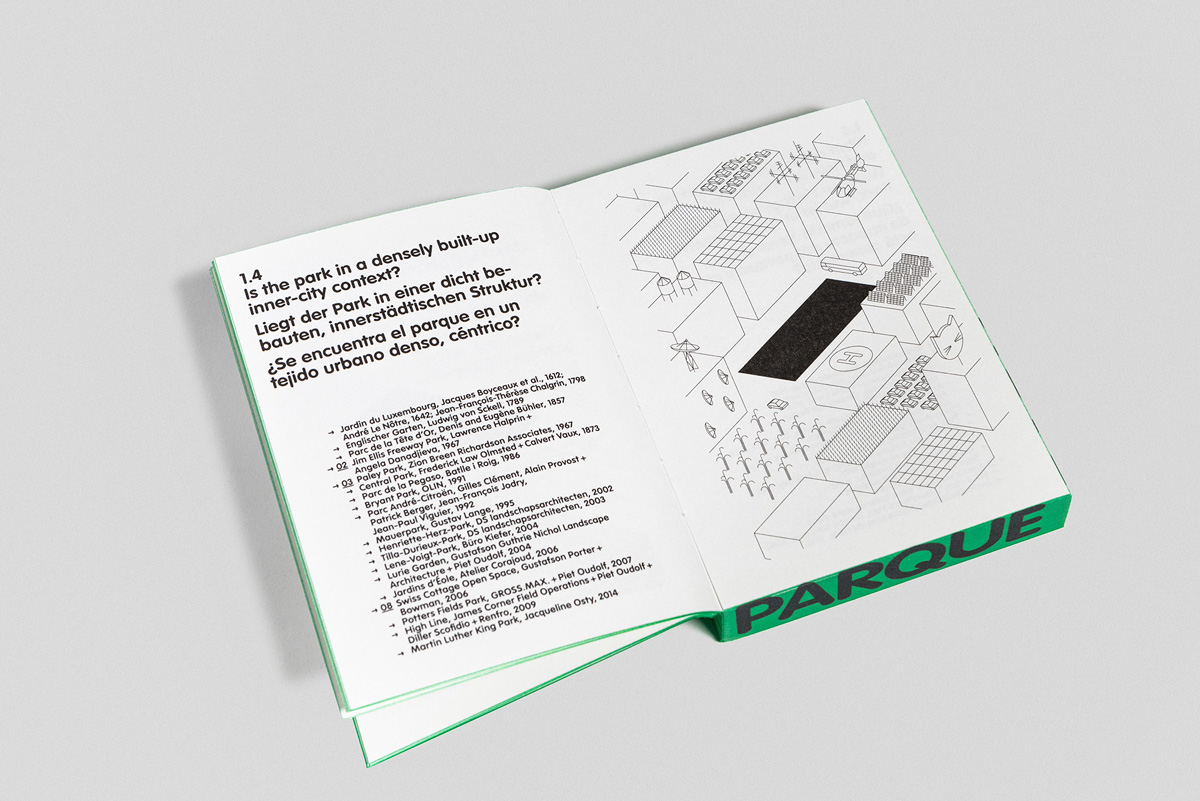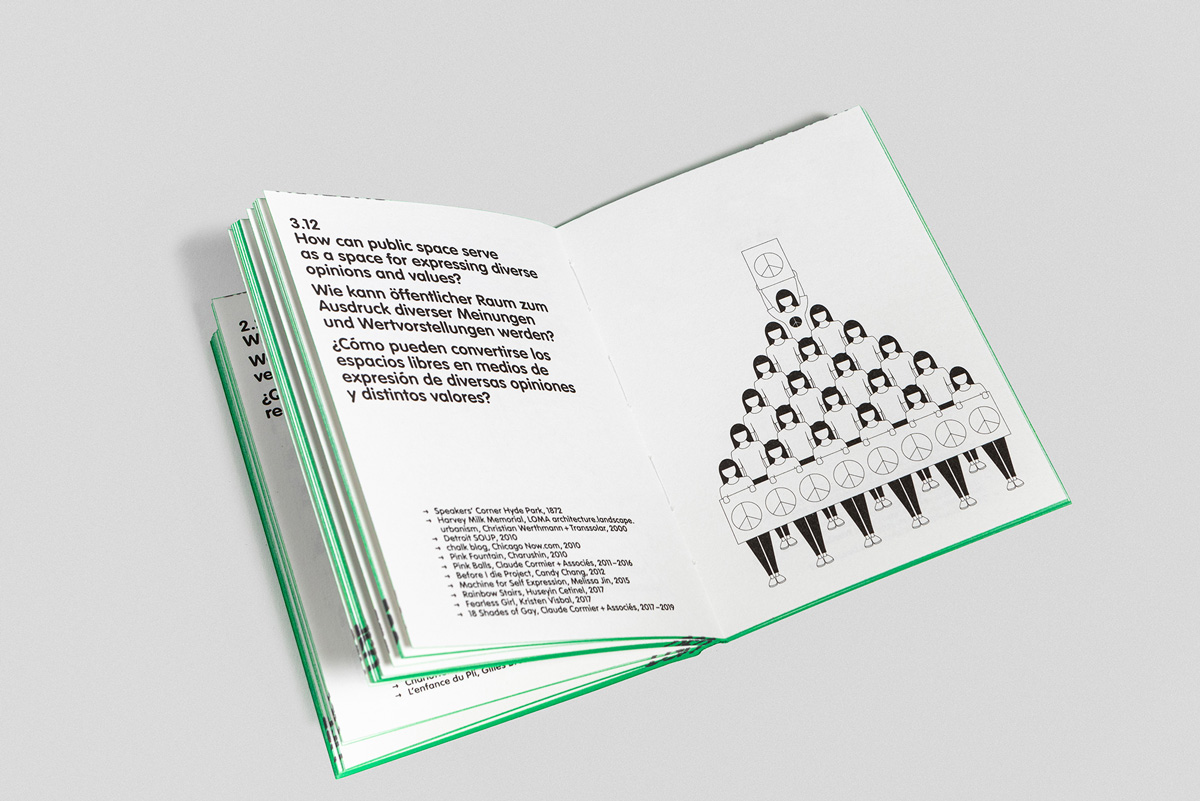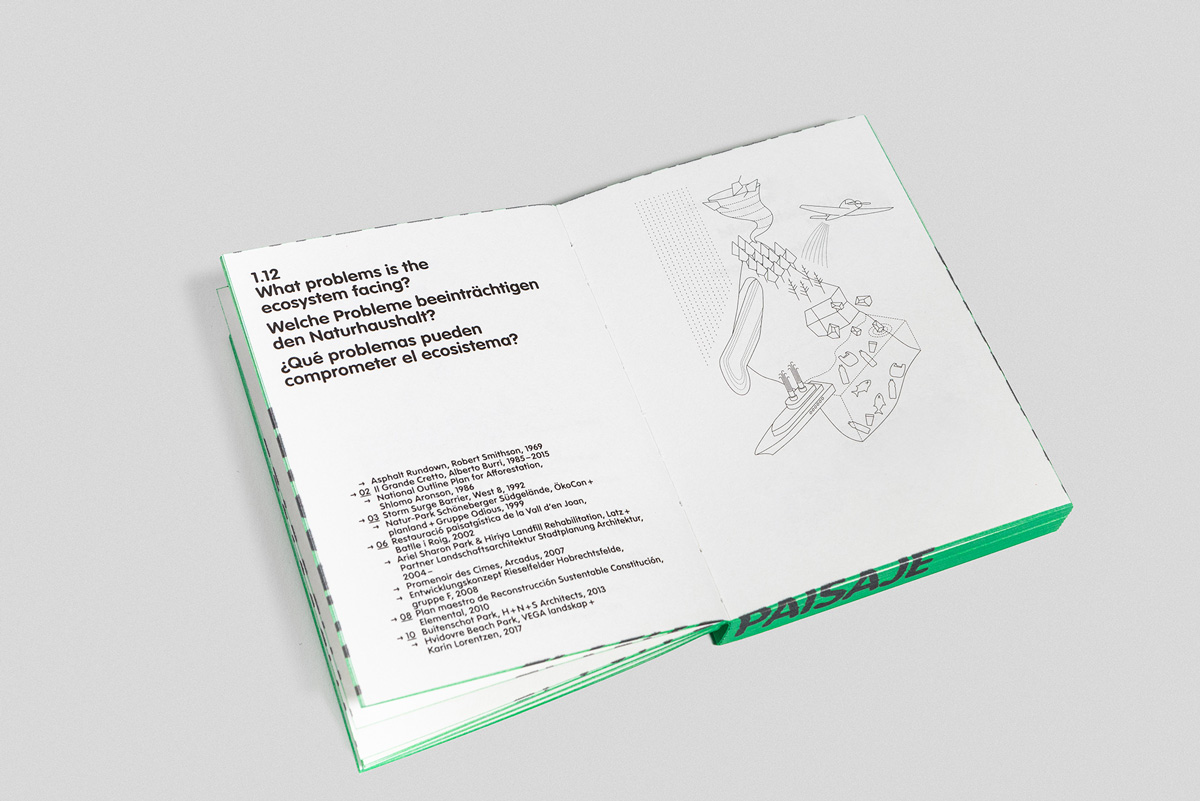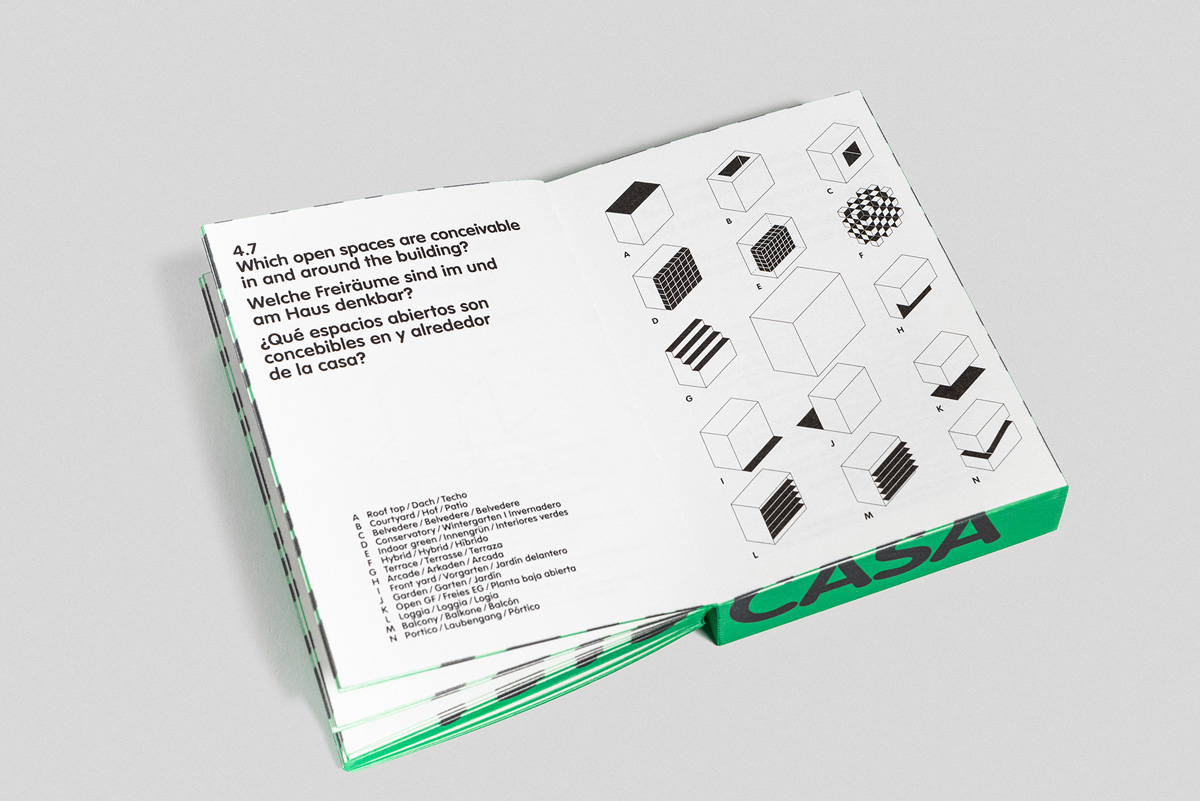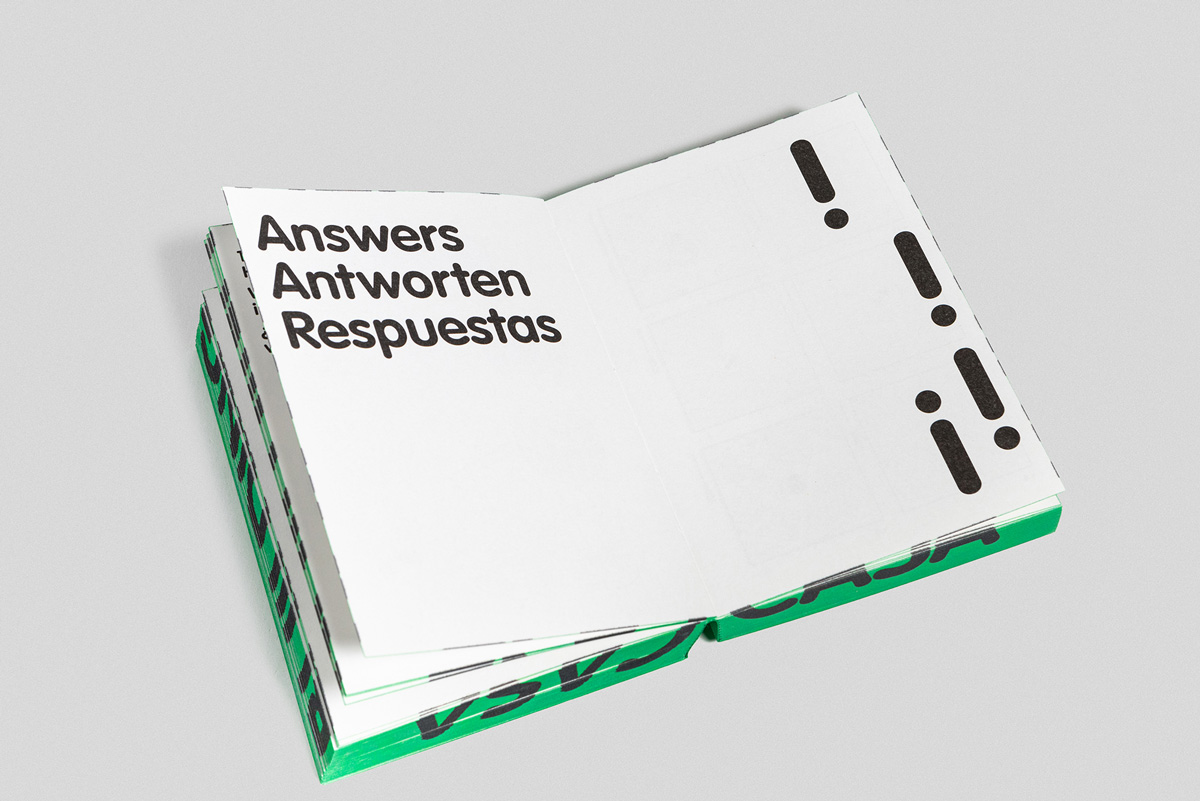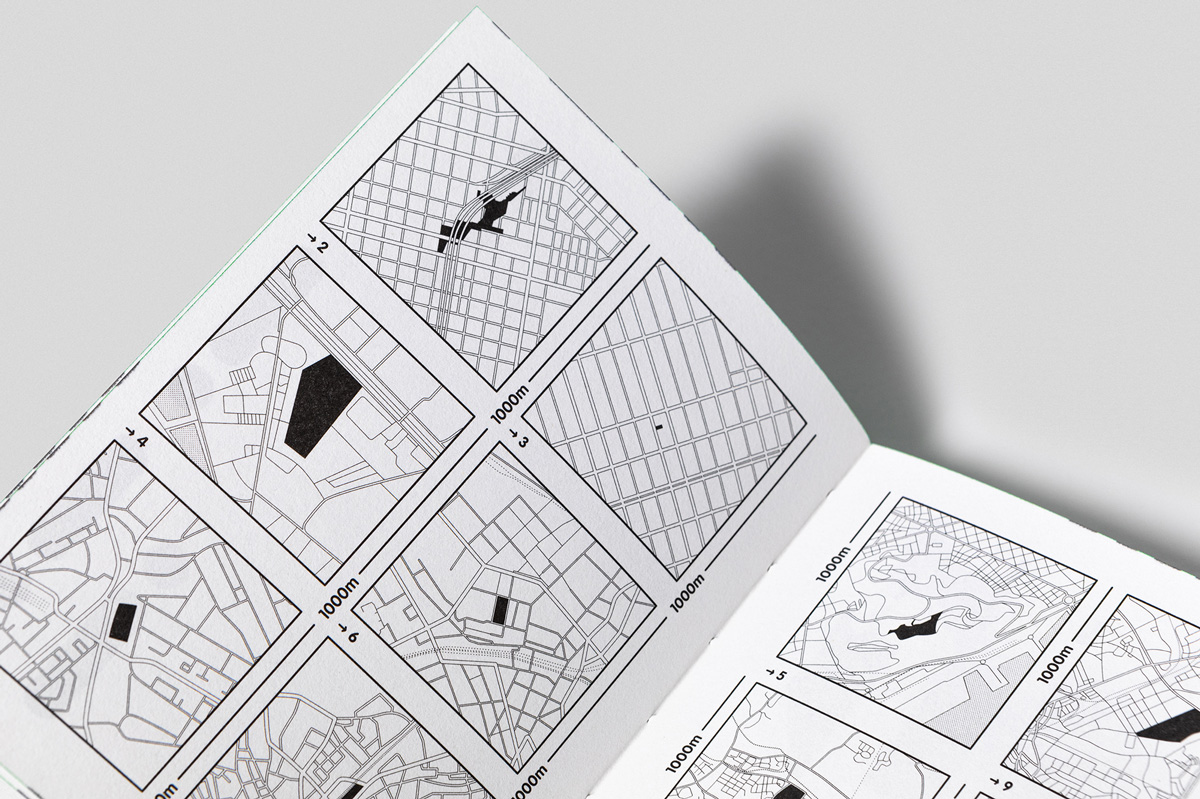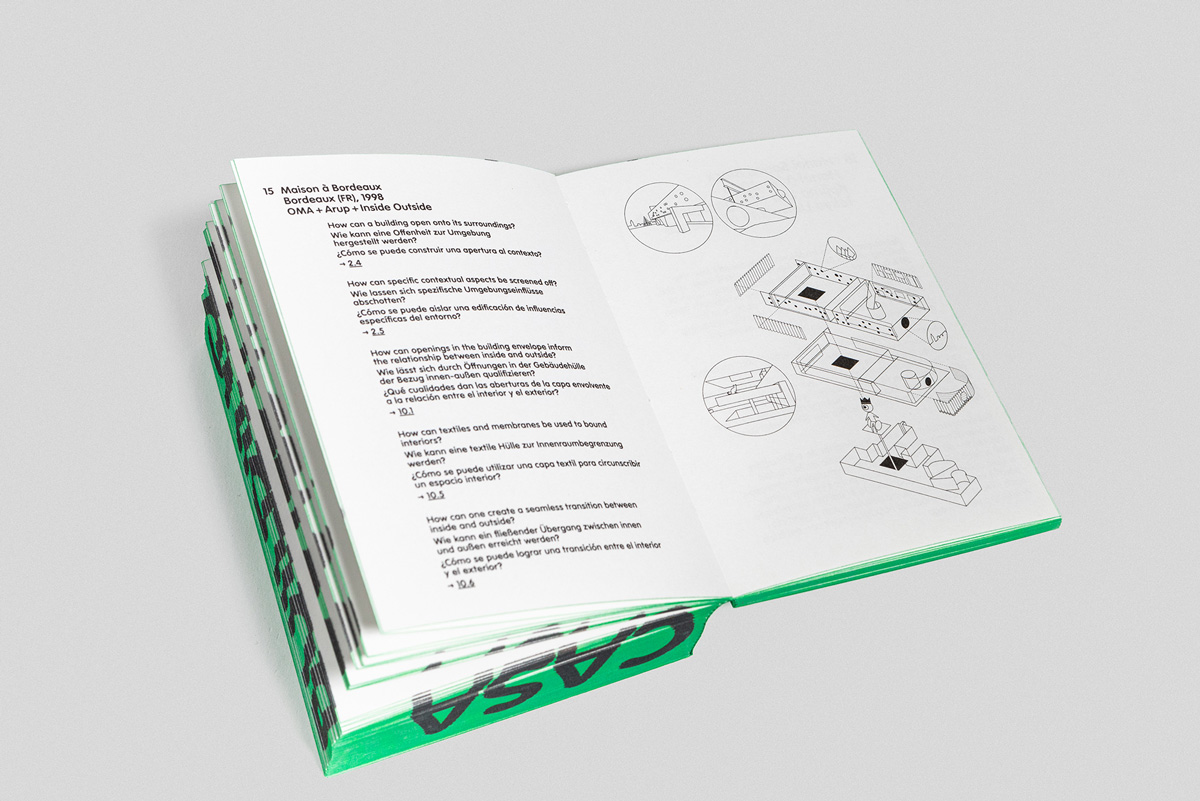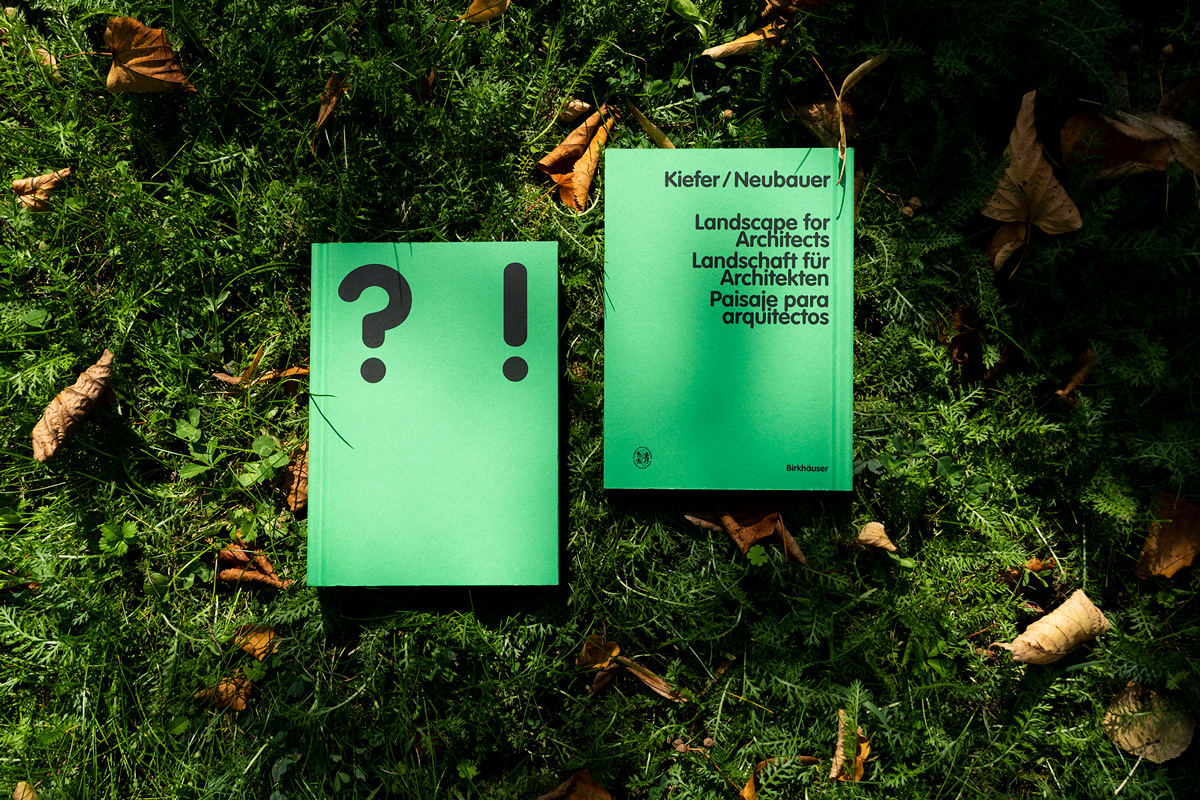Landscape for Architects
Landschaft für Architekten
Paisaje para arquitectos
Building, Landscape, Park, Qualities, Use
Haus, Landschaft, Park, Qualitäten, Nutzung
Casa, Paisaje, Parque, Cualidades, Uso
Gabriele G. Kiefer, Anika Neubauer
Department Architektur, TU Braunschweig
The design of landscapes requires a holistic approach but also in-depth specialist knowledge. In teaching and publications, however, the perspective of the generalist and concrete aspects of design are often neglected. “Landscape for Architects” is a design manual that is as comprehensive as it is practical and as holistic in its concept as it is lucid in detail. It presents a series of “questions” illustrated by abstract schematic drawings along with “answers” in the form of analytical drawings of case studies that aim to inspire creative reflection and exploration in the reader’s own design process.
“Kiefer and Neubauer’s legend, a thirty-six-pictogram spread at the end of every volume, is a start to parallel Neurath and Arntz’s isotype visual language. However, the playfulness and diversity of the pictograms (many women, various races and non-humans) in the two ladies’ contemporary work stands in stark contrast to the more mechanical and dominantly male components of the interwar works of the men.” Kelly Shanon in Journal of Landscape Architecture
Landscape for Architects
Landschaft für Architekten
Paisaje para arquitectos
Building, Landscape, Park, Qualities, Use
Haus, Landschaft, Park, Qualitäten, Nutzung
Casa, Paisaje, Parque, Cualidades, Uso
Gabriele G. Kiefer, Anika Neubauer
Department Architektur, TU Braunschweig
The design of landscapes requires a holistic approach but also in-depth specialist knowledge. In teaching and publications, however, the perspective of the generalist and concrete aspects of design are often neglected. “Landscape for Architects” is a design manual that is as comprehensive as it is practical and as holistic in its concept as it is lucid in detail. It presents a series of “questions” illustrated by abstract schematic drawings along with “answers” in the form of analytical drawings of case studies that aim to inspire creative reflection and exploration in the reader’s own design process.
“Kiefer and Neubauer’s legend, a thirty-six-pictogram spread at the end of every volume, is a start to parallel Neurath and Arntz’s isotype visual language. However, the playfulness and diversity of the pictograms (many women, various races and non-humans) in the two ladies’ contemporary work stands in stark contrast to the more mechanical and dominantly male components of the interwar works of the men.” Kelly Shanon in Journal of Landscape Architecture
Publication
Five Volumes
English, German, Spanish
isbn 978-3-0356-1676-7 (Softcover)
isbn 978-3-0356-1726-9 (Hardcover)
Gabriele G. Kiefer, Anika Neubauer
Department Architektur, TU Braunschweig
Birkhäuser
birkhauser.com
landscapeforarchitects.com


